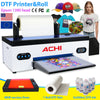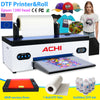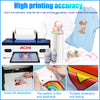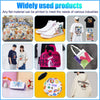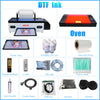ACHI A3 Roll DTF Printer Printing vs. Screen Printing: Which Is More Durable?
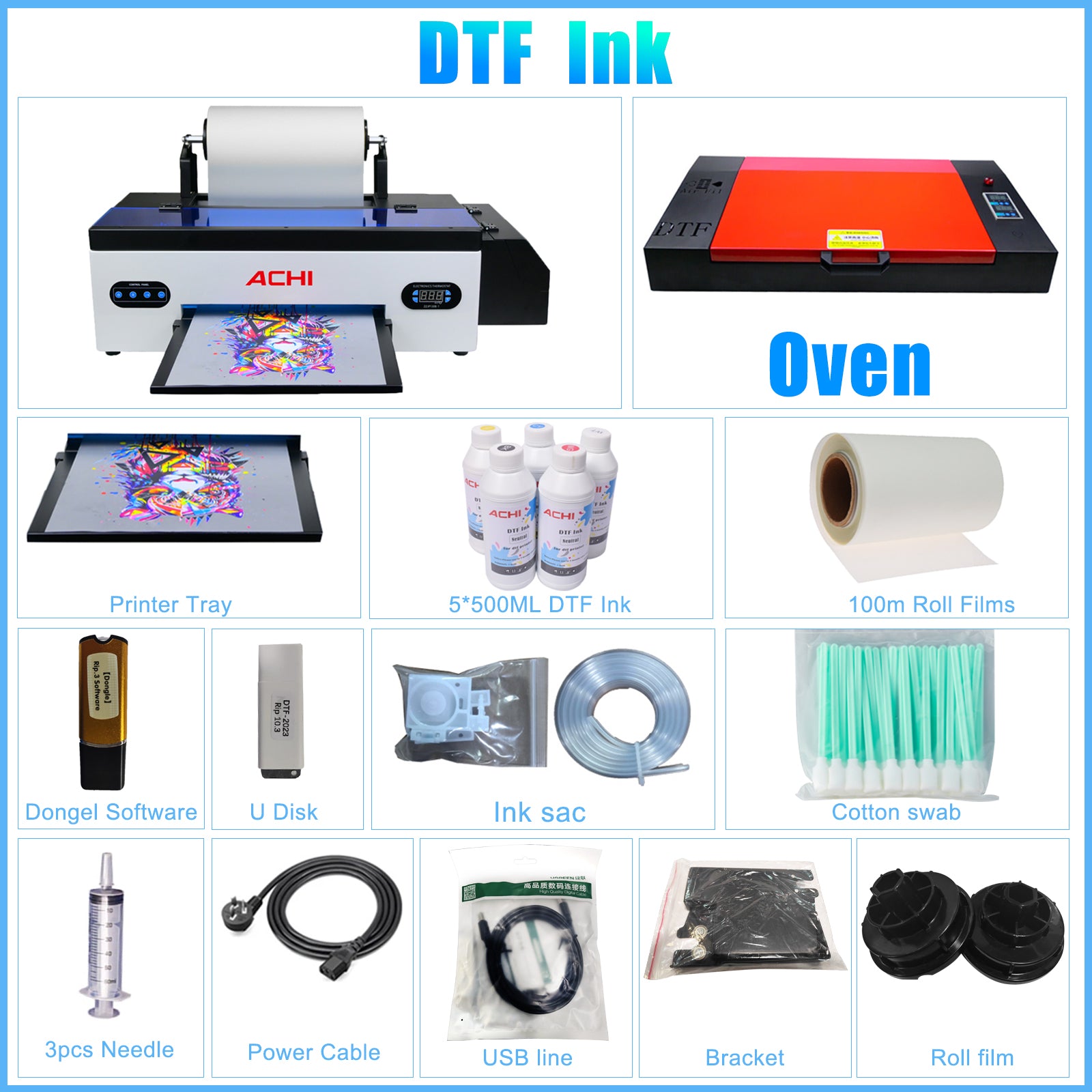
The age-old question in garment decoration – Direct to Film (DTF) or Screen Printing – often centers on durability.
Especially for businesses investing in equipment like the ACHI A3 Roll DTF Printer.
Both methods deliver vibrant prints, but how do they hold up over time?
Let's break down the durability factors based on the inherent strengths of each technology.
The Contender: Screen Printing
Screen printing is the traditional heavyweight.
It involves creating a stencil (a screen) for each color in a design and then pushing ink through these screens onto the garment layer by layer.
This process results in a thick, plastisol ink deposit on the fabric's surface.
Durability Profile:
-
Strength: The thick layer of ink is highly durable and can withstand intense friction and abrasion. When done correctly with high-quality inks and a proper cure, screen prints are known to last the entire lifespan of a garment.
-
Weakness: The thick layer is also its main weakness. It can be prone to cracking over time, especially if the garment is stretched repeatedly or if the ink is not cured properly. The feel can be stiff, and complex, multi-colored designs require extensive setup time and cost.
The Challenger: ACHI A3 Roll DTF Printer Printing
DTF is a modern digital printing method.
It involves printing a design onto a special PET film with water-based pigment inks and then sprinkling a hot-melt powder (adhesive) over it.
The powder is melted, and the entire design is heat-pressed onto the garment.
The ACHI A3 Roll DTF Printer automates this process with high precision, handling roll-to-roll film for efficient bulk production.

Durability Profile:
-
Strength: DTF creates a highly flexible and soft print. The ink and adhesive bond at a fiber level, allowing the print to stretch and move with the fabric without cracking. This makes it ideal for modern, form-fitting apparel like leggings and performance wear.
-
Weakness: While excellent, the durability can be slightly different. It excels in stretchability but may be more susceptible to abrasive wear over a very long period compared to a thick, perfectly cured plastisol layer. However, with advancements in inks and powders, high-quality DTF prints are exceptionally long-lasting.
Head-to-Head: The Durability Breakdown
| Feature | Screen Printing | ACHI A3 DTF Printing | Durability Winner? |
|---|---|---|---|
| Crack Resistance | Can crack with repeated stretching due to thick ink layer. | Excellent. Flexible print moves with the fabric, resisting cracks. | ACHI A3 Roll DTF Printer |
| Stretchability | Poor. The rigid ink layer limits stretch. | Superior. Ideal for elastic fabrics like cotton-polyester blends. | ACHI A3 Roll DTF Printer |
| Abrasion/Wash Resistance | Excellent when cured properly. Withstands high friction. | Very Good. Withstands standard washing well; extreme abrasion over years may cause fading before screen print. | Slight Edge: Screen Printing |
| Hand Feel | Can be heavy and stiff (especially with large designs). | Soft, lightweight, and breathable; barely noticeable on the fabric. | ACHI A3 Roll DTF Printer |
| Color Vibrancy & Detail | Excellent for solid colors; complex gradients/details are challenging. | Unmatched. Photorealistic prints with full color gradients and fine details. | ACHI A3 Roll DTF Printer |
Why the ACHI A3 Roll DTF Printer is a Game-Changer for Long-Lasting Prints
The machine itself plays a critical role in achieving durable results. The ACHI A3 Roll DTF Printer isn't just a printer; it's an integrated system designed for consistency and quality:
-
High-Precision Printing: Its advanced print heads ensure a sharp, dense ink laydown, which is the foundation for a vibrant and durable transfer.
-
Automated Powder Shaking: An even, consistent application of the hot-melt powder is vital for adhesion. The ACHI A3's automated system eliminates human error, ensuring every square inch of the design has the same strong bond.
-
Efficient Curing Tunnel: The built-in drying and curing oven melts the powder perfectly, preparing the transfer for a permanent bond with the fabric during the final heat-press stage. Proper curing is non-negotiable for durability.
Conclusion: Which is MORE Durable?
The answer depends on your definition of "durable."
-
If resistance to cracking and stretching is your primary concern for activewear or fashion-forward garments, the ACHI A3 DTF Printer is the clear winner. Its flexible, fiber-level bond ensures the design moves with the wearer.
-
If your product will face extreme, consistent abrasion (e.g., heavy-duty workwear), traditional screen printing with plastisol ink might still have a slight edge in sheer surface toughness.
However, for the vast majority of applications—t-shirts, hoodies, hats, bags, and sportswear—DTF printing from a reliable machine like the ACHI A3 offers an outstanding balance of durability, softness, and breathtaking detail.
It provides longevity that meets and often exceeds customer expectations, all while eliminating the complex setup of screen printing.
For businesses seeking a versatile, efficient, and powerfully durable printing solution for the modern market, the ACHI A3 Roll DTF Printer represents the future of garment decoration.
It proves that durability doesn't have to mean stiff and bulky; it can be flexible, soft, and incredibly long-lasting.
-
Posted in
DTF printer
